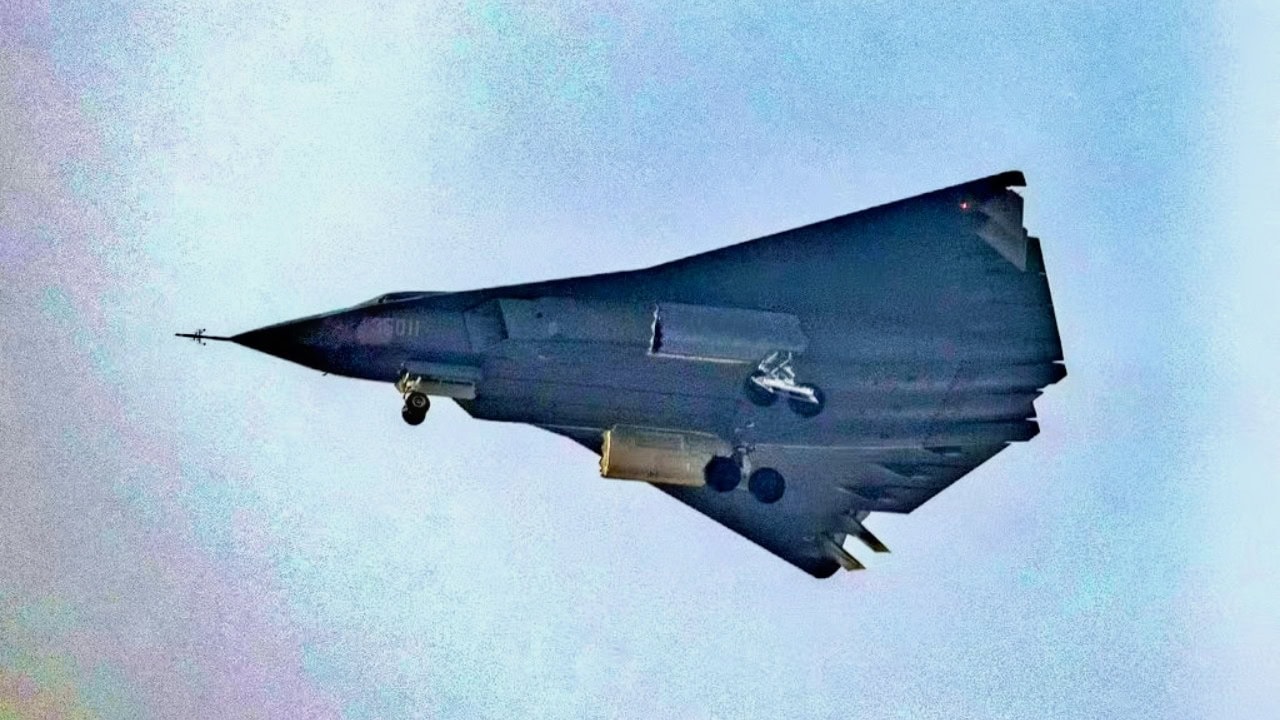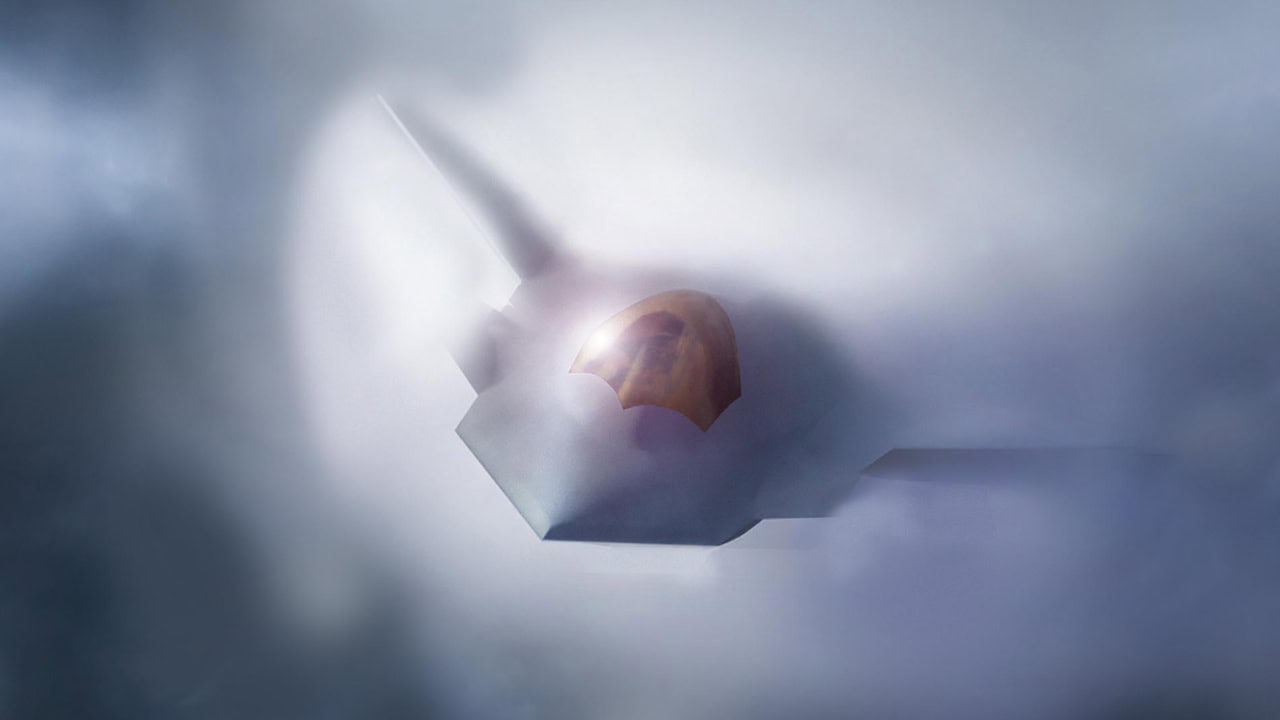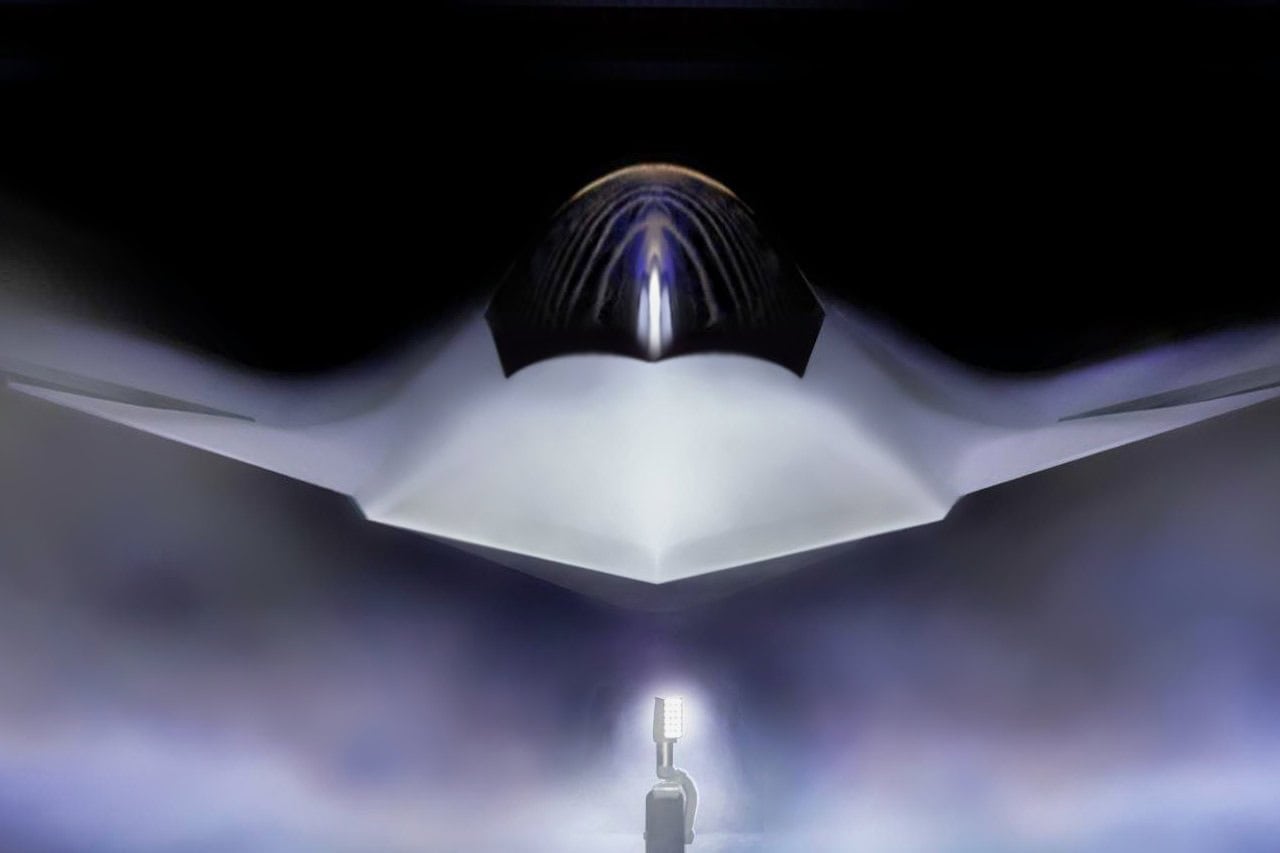Summary and Key Points: China’s sixth-generation fighter, the Chengdu J-36, is reportedly advancing smoothly, recently completing its second test flight. Images show the J-36 utilizing three afterburner-equipped WS-10C engines, signaling progress despite ongoing development of the newer WS-15 engine.
-The aircraft’s distinctive tailless design includes features similar to the U.S. B-2 bomber, indicating advanced stability and flight control capabilities. Its rapid test cycle and absence of chase aircraft suggest Chinese confidence in its performance.
-While the J-36 aims to demonstrate China’s growing aerospace capabilities, analysts note the U.S. F-47 NGAD fighter—recently confirmed by President Trump—has been flying in secrecy for several years, maintaining America’s technological edge.
Chengdu J-36 vs. F-47 NGAD: Inside China’s Latest Stealth Fighter
A Chinese columnist wrote last week that additional photos and sightings of the Chengdu J-36 suggest that the program is enjoying “smooth progress” in the validating process of its flight envelope.
The report on these comments came from the South China Morning Post, the Hong Kong English-language newspaper originally founded when the city was still a British Crown Colony.
News of the Chinese sixth-generation fighter came in the same news cycle that United States President Donald Trump announced the US Air Force F-47 NGAD fighter contract award.
The aircraft, sometimes referred to as Ginkgo Leaf (銀杏葉) or “Flying Doritos,” has now been seen conducting what is supposedly a second test flight. Images of this event first circulated online on March 17. The aircraft was first seen in online postings after what was billed as a maiden flight on December 26, 2024.
On both occasions, the images and video captured appear to have been taken at the Chengdu Aerospace Corporation (CAC) aerodrome and the co-located Aircraft Plant No. 132 in China’s southwestern Sichuan Province. Details about what is seen in these images have prompted the above comment about the program’s relatively trouble-free shakeout of its design.
Propulsion Progress
One detail is that the aircraft has been seen taking off with all three of its engines in afterburner, which are supposedly the Chinese-made WS-10C developed for the Shenyang J-11 program. That aircraft is a reverse-engineered copy of the Russian Sukhoi Su-27. This Chinese engine now powers the J-11 and Chengdu’s J-10C single-engine fighter.
Many predict that future versions of the J-36 will be equipped with the WS-15 Emei engine, initially developed for another Chengdu program, the J-20. That aircraft first flew in early 2011 and was initially fitted with some of the Russian-made AL-31F engines purchased directly from the Salyut plant in Moscow in the 2000s.
The WS-10C eventually replaced the engines, and then the WS-15, but only after the aircraft had been flying for hundreds of hours with engines did the Chinese engineers have a higher confidence in their reliability. That the J-36 is using the “more reliable” WS-10C says that Chinese proficiency with the WS-15 engine design still has technical issues to overcome.
Validation Notes
The J-36’s massive (compared to any other fighter aircraft) size and the lack of vertical control surfaces are two aspects of the sixth-generation platform’s design that raise questions about its stability. When an aircraft is minus a conventional vertical plus horizontal tail configuration, the control and stabilization functions in both pitch and roll must be incorporated into the main wing and its control surfaces.
Some other details that can be seen in these recent images are the aircraft’s external features. These include a diverterless supersonic inlet (DSI) air intake for the third engine mounted on its dorsal surface. There are also split flaps close to the wingtips that would be coupled to the flight control system. These are used to keep the aircraft’s flight path stable—a similar design to what was developed for the US B-2 “flying wing” bomber.
There are, therefore, multiple unknown aspects of any such aircraft’s performance. Learning the intricacies of no-vertical control surface instability is one of them. Another is validating the flight control computer system’s software. That computer’s programming is designed to keep the aircraft’s flight characteristics on a stable vector and does not allow it to depart into an unrecoverable maneuver.
These design features often dictate a slow, measured, risk-averse flight performance validation plan. This validation process calls for many test flights that expand the aircraft’s flight envelope in small increments with each successful take-off and landing.
However, in what is allegedly only the second test flight of the J-36, the aircraft was flying solo with no chase plane or wingman to follow it to radio in any in-flight faults that could be seen from outside the aircraft.
It also flew with its landing gear seemingly retracted. Aircraft being flown for the first time almost always complete several test flights with the landing gear remaining in the deployed position—just in case something goes wrong with the hydraulics or other control systems.

China J-36 Fighter. X Screenshot.
This could mean retracting and lowering the landing gear, and the aerodynamic flutter that this creates, if any, was already being tested by the program’s engineers in only the second flight of the aircraft. This is also unusual because less than three months between the first two “known” flights is very little time to adequately analyze all the data that must have been collected from the first time the J-36 was airborne.
The Showing-Off Continues for J-36…But Here Comes the F-47
One would have to say “known” because the Chinese are famous for conducting multiple flights of a new aircraft and then only later letting the world see the ones they want to show off.
However, the 3-engine afterburner take-off and the landing gear being retracted in-flight would suggest that Chengdu does not have the usual concerns about the aircraft’s stability that one would expect this early in the program. One of the outlets making this point was the state-run English-language, Beijing-based tabloid Global Times.
“The new aircraft is making smooth progress with test flights in short intervals,” Chinese military commentator Song Zhongping wrote in the paper, which is known for being a reliable mouthpiece of the Chinese Communist Party.

F-47 Fighter. Image Credit: U.S. Air Force.
It is another clear case of the Chinese wanting to show up the United States Air Force, said a senior US aerospace industry advisor—flaunting this aircraft’s performance in response to the decision today on the NGAD program. It is like a sign that reads, “Look at us – we are way ahead of you” in the next-generation fighter race.
The Chinese may want this to be the impression created, he said. “But as has been reported so many times today, the Boeing F-47 NGAD demonstrator has actually been flying for years now. So, if there is anyone ahead in the game, it is us.”
About the Author: Reuben F. Johnson
Reuben F. Johnson is a survivor of the February 2022 Russian invasion of Ukraine and is now an Expert on Foreign Military Affairs with the Fundacja im. Kazimierza Pułaskiego in Warsaw. He has been a consultant to the Pentagon, several NATO governments, and the Australian government in the fields of defense technology and weapon systems design. Over the past 30 years he has resided in and reported from Russia, Ukraine, Poland, Brazil, the People’s Republic of China and Australia.

